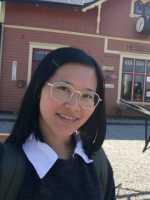MedicalResearch.com Interview with:
 Neil Graham, M.B.B.S., M.D., M.P.H
Neil Graham, M.B.B.S., M.D., M.P.H
VP of Immunology & Inflammation
Regeneron
MedicalResearch.com: What is the background for this announcement?
Response: Patients with moderate-to-severe asthma often have uncontrolled, persistent symptoms despite standard-of-care therapy that may make them suitable for treatment with a biologic therapy. They live with coughing, wheezing and difficulty breathing, and are at risk of severe asthma attacks that may require emergency room visits or hospitalizations.
[i],[ii] Oral corticosteroids can provide relief for severe, short-term symptoms. However, their chronic use is limited to the most severe patients due to the potential for serious side effects.
[iii],[iv]
A particular type of inflammation contributes to the cause of uncontrolled symptoms in multiple inflammatory diseases such as asthma and atopic dermatitis.
[v] Dupixent is a medicine that inhibits the overactive signaling of interleukin-4 (IL-4) and interleukin-13 (IL-13), two key proteins that contribute to this type of inflammation. This inhibits cytokine-induced inflammatory responses, including the release of proinflammatory cytokines, chemokines, nitric oxide, and IgE; however, the mechanism of action of Dupixent in asthma has not been definitively established.
(more…)



























